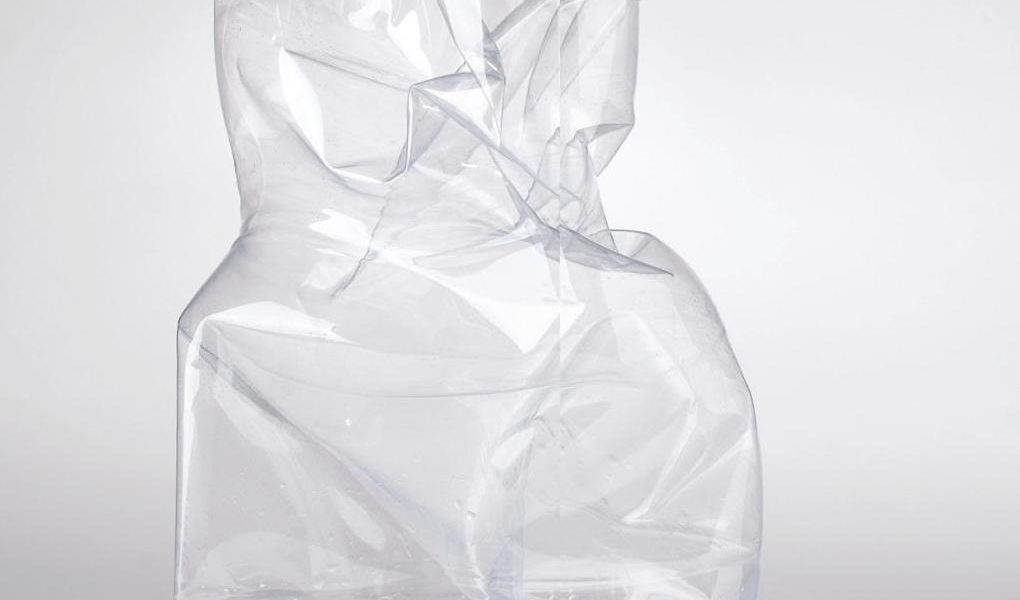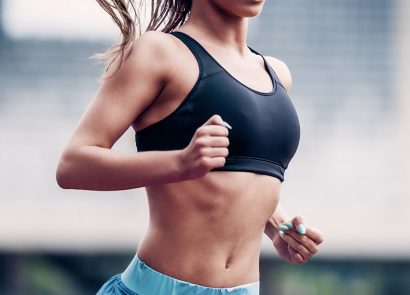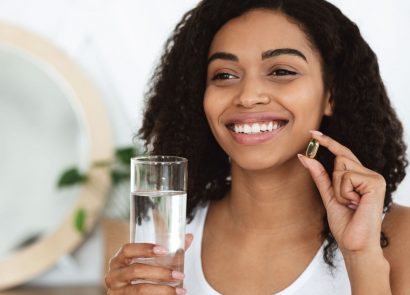Cast your eyes over any magazine, website or blog claiming to have the answer to glowing skin and flatter tummies, and you’ll find that amongst the wonder creams and fat-busting moves, the answer tends to be water. But while we pat ourselves on the back for guzzling away postworkout, at our desk or on the sofa, there may be a harmful secret hiding in our H2O. As researchers continue to test the elements of our trusty plastic water bottles, the next time we rehydrate after that spin class, should we be asking ourselves: how safe is it really?
Here’s a crazy statistic: in 2014 we consumed 2,580 million litres of bottled water in the UK with natural mineral water accounting for 60 percent of the UK drinks market. It’s an impressive number, and one that’s proven that, as a nation, we now drink more bottled water than fruit juices, wine and spirits. Well done us! But as more reports hit the media warning us against the harmful chemicals found in plastic packaging, are we doing more harm than good? Not according to Cancer Research UK (cancerresearchuk.org ) who point out that all single-use water bottles in the UK are made using PET (Polyethylene Terephthalate) plastic and comply with European and national legal requirements. Crucially, no BPA (Bisphenol A – a dangerous industrial chemical that has been used to make certain plastics and resins since the 1960s) should be legally present in any commercial retail product.
Such controversy and media hubbub has forced us to be a little more selective about our water vessels, as they quickly become as coveted as the latest ‘IT’ bag or new season sportswear. This hasn’t gone unnoticed as brands quickly fill a niche in the market with fashion-worthy containers fit for celebrities to tote to and from their local gym.
Eric Barnes was one of those people keeping a close eye on this new movement and created the KOR bottle (korwater.co.uk) to solve an ever-growing problem. “Hydration is about wellness, and that starts with having a safe water bottle to drink from,” Eric tells us. “In 2005, most leading plastic reusable bottles were made out of polycarbonate. The accusation was that trace amounts of BPA leeched into the liquid inside, and when consumed could impact the brain, cells and behaviour. We then came in contact with Eastman Chemical, which was just developing a new co-polyester material that had the clarity and durability of polycarbonate but did not contain BPA. Single-use bottles (bottled water) are damaging on multiple levels as they’re typically made from PET (polyethyleneterephthalate), which is safe for single-use but can break down easily with heat or extended reuse.”
So what can we do? According to Angela Conlan, project manager at waterbobble (waterbobble.uk ), it’s all about the choices we make. “There are lots of scary stories about why you shouldn’t re-use your plastic water bottles.
We at bobble believe it’s safer not to take any chances. If you’re going to buy a re-usable bottle, look for one that is free of BPA, phthalates and PVC. People may not realise it but buying bottled water is also a costly habit. In the UK we currently spend more than £2 billion a year on bottled water. Bobble retails for approximately £10, and every replaceable filter is equivalent to 300 single-serve plastic water bottles.” No wonder we can’t afford those new trainers! But health concerns aside, Angela believes we should also be conscious of the environmental effect of water bottles. “In the UK alone, 275,000 tonnes of plastic are used each year, that’s about 15 million bottles per day.” Yikes! Drink anyone?
BOOST YOUR BOTTLE
BKR
It may not be as practical as it’s made from glass, but it’s oh so pretty! £25 mybkr.com
KOR
Sport-friendly design, hinged-cap and BPA-free. A favourite with runners and cyclists for its ease of use. £19.99 korwater.co.uk
WATERBOBBLE
The replaceable carbon filter removes chlorine and contaminants from tap water. £9.99 waterbobble.uk
SIGG
100 percent recyclable and a celeb favourite. £16.99 sigg.com
KNOW YOUR NUMBERS
#1 (PET or PETE) plastic is the kind used for bottled water bottles, which are generally regarded as safe.
#2 HDPE), 4 (LDPE) and 5 (polypropylene) plastics are generally regarded as safe.
#3 PVC) and 6 (styrene) plastics pose health risks and should be avoided (they tend to be used for food containers).
#7 plastic is usually polycarbonate and contains BPA. It’s best avoided.






















